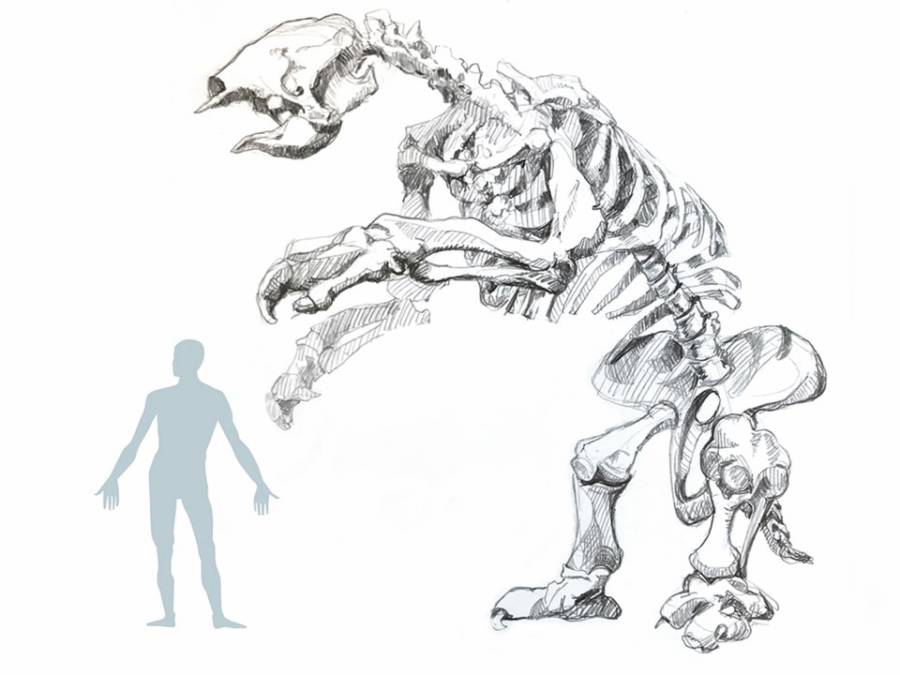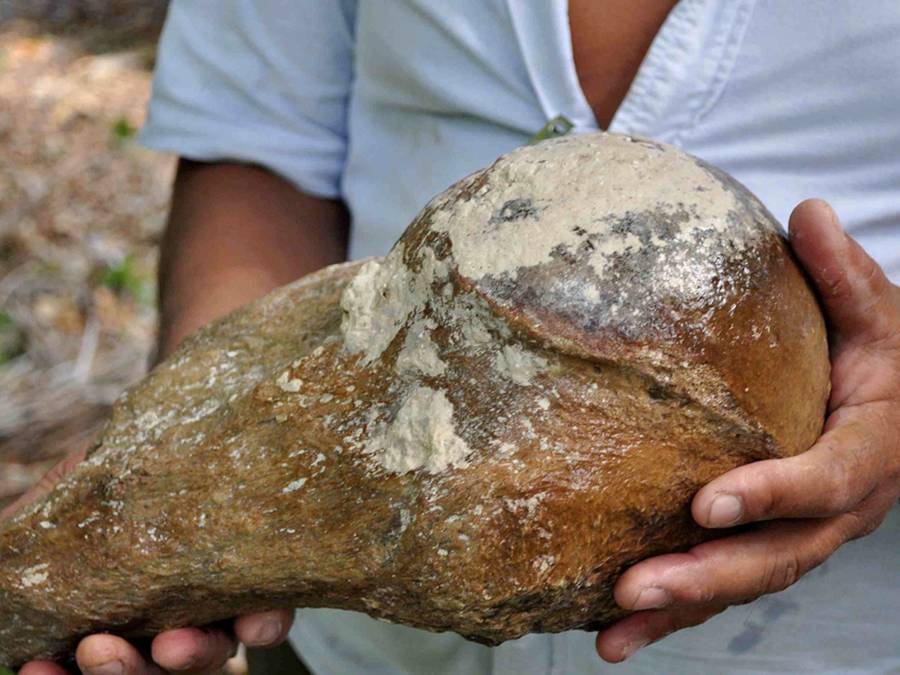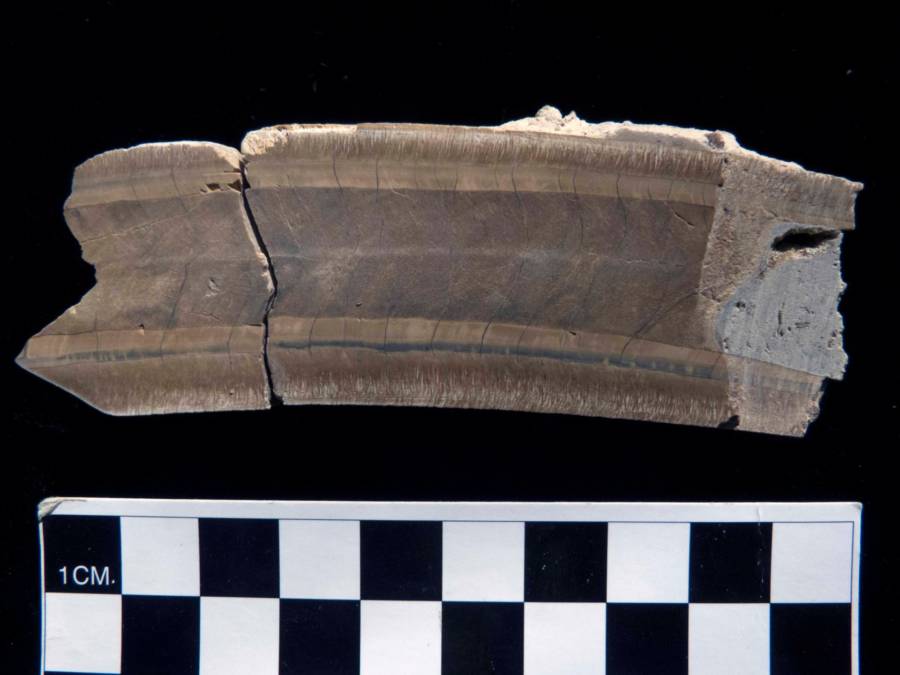The giant sloth was allegedly up to 20 feet long, stood 13 feet tall, and weighed around 14,400 pounds.

Julie McMahon, University of Illinois at Urbana-ChampaignA size comparison depicting an average adult man with the giant, 13-foot sloth.
The 2014 discovery of 27,000-year-old fossils of a giant ground sloth was purely coincidental. Divers were searching for ancient Maya artifacts when they chanced upon the animal’s tooth fragment, humerus, and femur fossils in a sinkhole in Clara Blanca, Belize.
Now, the animal’s 4-inch tooth fragment is providing the University of Illinois at Urbana-Champaign’s team with significant insight into the animal’s sustenance and the conditions in which it lived, Fox News reported. The sloth is believed to have weighed 14,400 pounds, stood 13 feet tall, and was up to 20 feet long.
“We began our study with the hopes of gaining a better understanding of the landscape within which large mammals went extinct and humans emerged in central Belize,” said Jean T. Larmon, a graduate student and lead researcher of the project.
Published in Science Advances journal, the study not only explored how this species of ancient sloth inhabited and utilized its environment, but could potentially bolster how scientists study similar fossils moving forward.

Lisa J. Lucero, courtesy of Valley of Peace ArchaeologyA fossil of the giant sloth’s humerus as discovered in 2014.
“In the process, we discovered which part of the tooth had best maintained its integrity for analysis,” said Larmon. “And we refined methods for studying similar specimens in the future.”
Alongside anthropology professors Lisa Lucero and Stanley Ambrose, Larmon’s study used a purportedly new process which allowed for a far more nuanced, detailed analysis than ever before.
Ambrose explained that this new process involved putting tissue and tooth fragment samples of the ancient sloth through isotopic analysis which informed the scientists of the “monthly and seasonal changes in the sloth’s diet and climate for the first time.”
Some of the new data revealed that the animal lived through long, dry seasons in a savanna, as opposed to previous theories that it was more of a forest-dwelling animal, and that it survived on a diet of plants that alternated depending on the wet or dry seasons.
“We were able to see that this huge, social creature was able to adapt rather readily to the dry climate, shifting its sustenance to relying upon what was more available or palatable,” added Larmon.
The isotopic analysis also painted a vivid picture of the giant sloth’s path to extinction. The team’s research suggests that the encroachment of human beings may have been partly responsible for the animal’s ultimate downfall.
“One of those potential factors is the arrival of humans on the scene 12,000 to 13,000 years ago,” Lucero explained.

Stan Ambrose, courtesy of Valley of Peace ArchaeologyThe 27,000-year-old giant sloth is a little long in the tooth, with the fossil measuring four inches.
Perhaps most captivating is the fact that a mere scuba dive 70 feet down into a 200-foot sinkhole resulted in such an eye-opening discovery — with those who found the fossils being confident that there’s far more down there to be found.
Greg McDonald, a paleontologist with the U.S. Bureau of Land Management who was part of the initial discovery in 2014, told Business Insider that what they’ve retrieved is already very informative but that there’s likely more to be uncovered.
“When we first went down, I thought ‘Ok we’ll find a few things,’ but it was amazing — there was just so much bone down there,” he said. “I was blown away. We didn’t want to remove too many specimens yet,” he said. “We hope to get back down there within the year if funding comes through.”
For now, the preliminary plan is to return to the site and thoroughly map it out before collecting more fossils and to learn even more about this giant, 14,400-pound sloth that once roamed the Belizean savannas.
After learning about the 27,000-year-old giant sloth fossil, read about the two-foot-tall Pitcher plant that can eat rodents. Then, learn about the 4-billion-year-old rock containing fossils of the first life on Earth.





